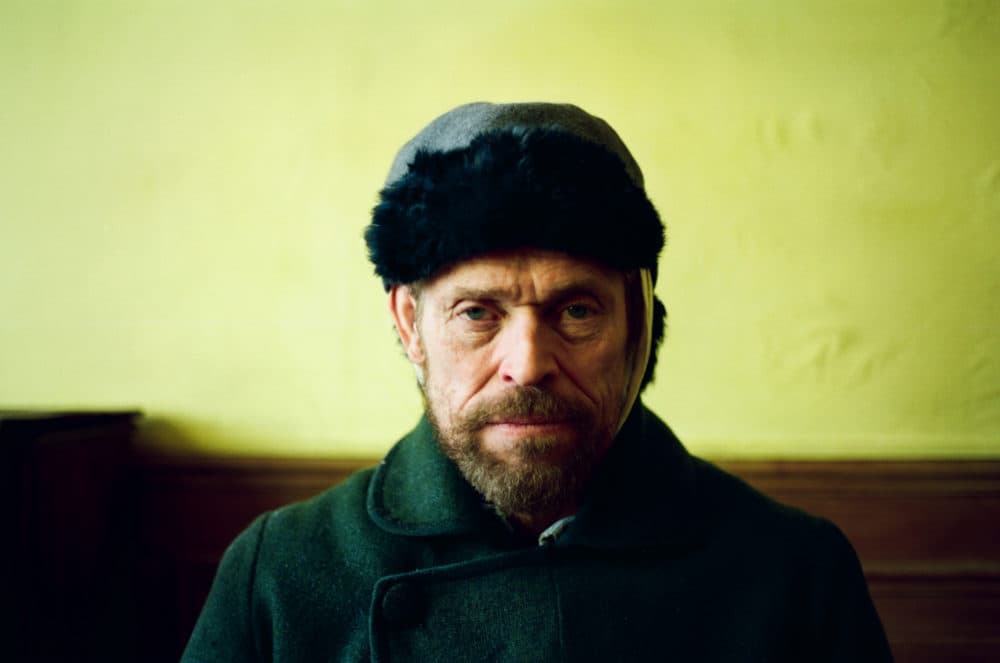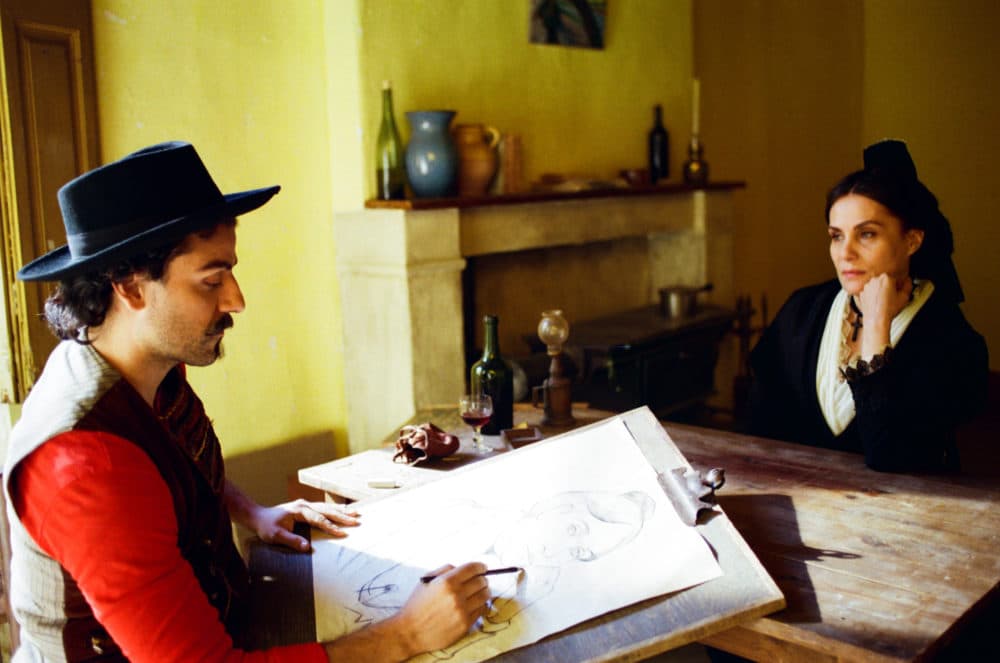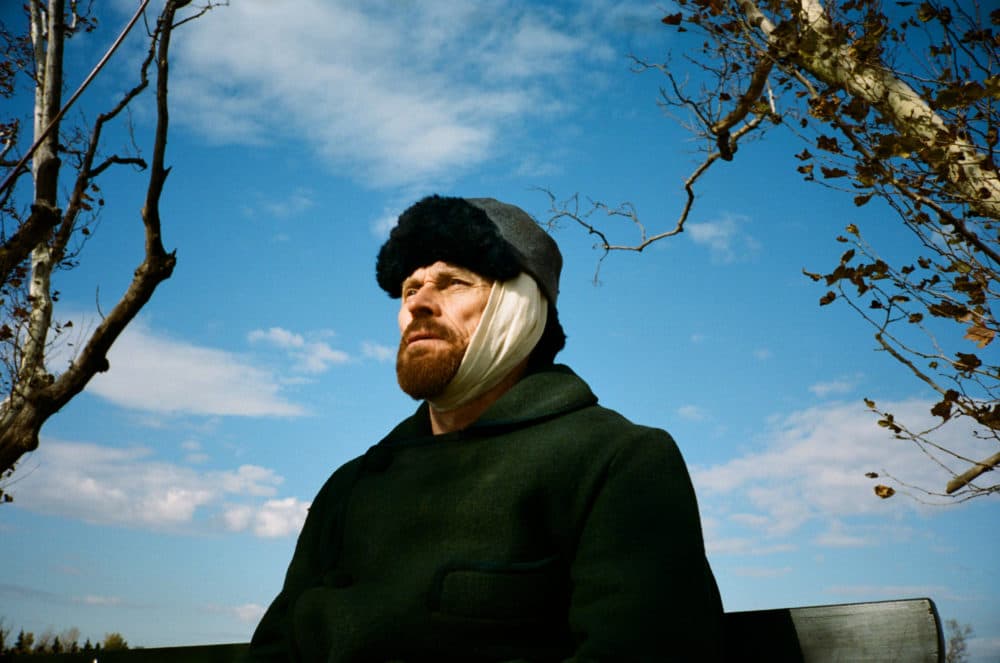Advertisement
Review
'At Eternity’s Gate' Tells Vincent Van Gogh's Story In The Style Of The Artist

The life and legend of Vincent van Gogh have been so immortalized and over-chronicled I’d bet folks with barely a passing interest in art can still probably summarize the bold strokes for you. Subsidized by his devoted brother Theo, the half-mad, ear-slicing genius broke with the pretty, popular impressionists to invent his own vivid, scalding-hued style so bracingly original that at the time most sophisticated folks couldn’t bear to look at it. Vincent van Gogh died in 1890, broke and unknown at age 37 without having sold a single painting. These days he’s probably the most popular fine artist on the planet.
Julian Schnabel’s "At Eternity’s Gate" figures you probably know all this already, and like most of this director’s biopics it doesn’t pay all that much mind to the “bio” part. A pugnacious painter who rocketed to super-stardom during the downtown art boom of the 1980s, Schnabel transitioned into filmmaking with unconventional portraits of his former rival Jean-Michel Basquiat (1996’s “Basquiat”), Cuban poet Reinaldo Arenas (2000’s “Before Night Falls”) and paralyzed writer Jean-Dominique Bauby (2007’s “The Diving Bell and the Butterfly”). He’s not interested in telling their personal stories so much as he’s attempting to suss out their creative processes. There’s a searching quality to Schnabel’s pictures, as if we’re watching him try to learn a few tricks from these artists he so admires.
The 63-year-old Willem Dafoe is probably several decades too old to be playing Vincent van Gogh, but with a pointy goatee he does bear a striking resemblance to the painter’s self-portraits. Besides, a movie this internalized needs a presence as large and warmly empathetic as Dafoe’s. “At Eternity’s Gate” picks up near the end of the artist’s life, after he fled gray, chaotic Paris for the south of France, looking for a new kind of light in the countryside.
Schnabel penned the screenplay with Louise Kugelberg and international cinema legend Jean-Claude Carriére, whose credits include “Belle de Jour,” “The Discreet Charm of the Bourgeoise” and “The Unbearable Lightness of Being.” As you might imagine, the conversations in this picture are heady stuff indeed, particularly van Gogh’s passionate shop-talk with his more socially adroit pal Paul Gauguin, played by the dashing Oscar Isaac. These two burn with feverish intensity, constantly talking about moving beyond the limits of impressionism and getting into granular discussions of technique.

It’s in this area of craft that “At Eternity’s Gate” especially distinguishes itself, with Benoît Delhomme’s spectacular cinematography paying particular attention to Vincent’s fresh light — searingly hot yellow and orange rays rippling out in lens flares from the corners of the frame. Schnabel is trying to make us see the super-saturated landscapes through van Gogh’s eyes, sometimes even shooting his POV through a mustard filter. The film spends a long time on the process of painting, inviting us to study brushstrokes and at one point even shifting to black-and-white so we might better appreciate the tactile textures of van Gogh’s piles of paint upon the canvas, which Gauguin describes as akin to sculpture.
It took me longer than I should probably admit to figure out what Schnabel gets up to here occasionally with a herky-jerky handheld camera and a sound design that keeps repeating key phrases from prior conversations in an echo effect. Obviously he’s trying to convey that Vincent’s off his rocker, and Dafoe’s wide, wolfish grin segues from sinister to beatific and back again better than anybody’s in the business. But then eventually it dawned on me that the manic camera movements are meant to mimic van Gogh’s rapid brushstrokes, and the repeated words an aural stand-in for the artist’s layered overpainting. So basically Schnabel’s trying to make a movie about Vincent van Gogh in the style of Vincent van Gogh, which is pretty neat.

Van Gogh is such a ubiquitous figure that filmmakers often tend to use him as a vessel for working out their own relationships with art. In 1990 Robert Altman’s invigoratingly angry “Vincent and Theo” capped a decade of European exile after the maverick filmmaker had been shunned by Hollywood, and it’s easy to see him interrogating his own anxieties through the penniless painter’s relationship with his businessman brother. But my personal favorite example came that very same year in Akira Kurosawa’s “Dreams,” when the Japanese master cast Martin Scorsese in a quick cameo as van Gogh, a lovely demonstration of one great artist’s esteem for another.
“At Eternity’s Gate” is about van Gogh as a painter and a craftsman, not a symbol. Schnabel puts the focus back on the work, and in the process allows us to see these familiar paintings with fresh eyes. Like Vincent, he finds a new light.
